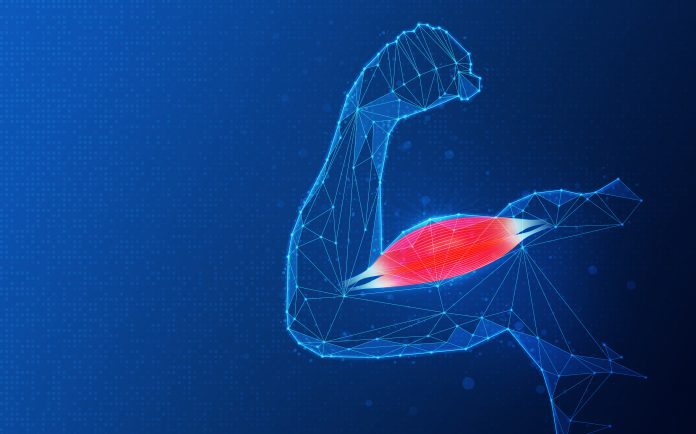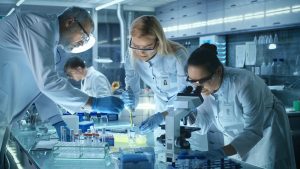
Lorna Rothery spoke to Pierre-Alexis Mouthuy about the key challenges and considerations within the fields of tissue engineering and regenerative medicine (TERM).
Health Europa Quarterly reached out to Pierre-Alexis Mouthuy, Associate Professor at the Nuffield Department of Orthopaedics, Rheumatology and Musculoskeletal Sciences in Oxford. In light of his research into novel devices that support the repair of damaged tissue, we discussed how the fields of tissue engineering and regenerative medicine (TERM) are evolving, the many factors to consider when developing applications, and some of the key barriers to be addressed in order to translate research and implement new technologies into clinical practice.
How have the fields of tissue engineering and regenerative medicine evolved in recent years?
The fields of tissue engineering and regenerative medicine, which are often referred to as ‘TERM’, are extremely diverse and ever-changing. TERM covers strategies ranging from the enablement of self-healing damaged tissue to proposing engineered grafts for restoring damaged tissue or organs. Nowadays, we tend to see an increasing level of complexity or functionalisation in the approaches developed by TERM researchers. This is partly because our knowledge of how biological tissues and organs work, and our technologies, continue to evolve. But also, as we are trying to imitate life or create systems that interact with life, we realise that simplicity is often not enough!
A consequence of the need for complexity is that multidisciplinarity has become essential in TERM’s approaches – engineers, medical doctors, biologists, material scientists and so forth, must work closely together to deliver viable solutions. Mathematicians and computational scientists have an increasing role to play as well. Also, TERM is not just about science: understanding the translational pathway to the clinics and therefore interacting with patients, regulatory experts and industry is also important.
Despite all the exciting work going on in the field, we are yet to show that TERM can make a real impact in clinics. Only a few, simple products have reached patients and their use is still very limited. There is an increasing number of translational work but reaching the clinic still remains extremely challenging due to multiple factors including the high cost of preclinical studies and the – much needed, yet increasingly demanding – regulatory environment.
Your work centres on the development of scaffolds and bioreactors for musculoskeletal tissue engineering, what types of health conditions could this technology support in the future and what unmet medical needs could it address?
One of the health conditions that we focus on is rotator cuff tendon tears. Tendon injuries represent the highest proportion of musculoskeletal conditions for which patients seek medical treatment. Tears often lead to pain and prolonged periods of disability, absence from work and inability to carry out even basic household activities. With an ageing population, and increased participation of older adults in the labour force, the burden of tendon tears has become more significant.
Rotator cuff surgical repairs are performed on more than 300,000 patients per year in the US but have around a 40% failure rate. We think this is because current strategies only aim to mechanically support the tendons, which have an intrinsically poor ability to regenerate. Instead, we need approaches that also support the biological process of tendon and damaged tissue healing, and this is where TERM could help. For instance, biomaterials or scaffolds can be designed to influence the local cell response and accelerate the healing process of damaged tissue through physical and/or chemical cues. Also, bioreactor systems can be used to precondition engineered grafts combining scaffolds and patient cells in vitro, prior to implantation.

What are the key technical challenges when designing scaffolds and ensuring they will function correctly?
The technical challenges that we face depend on the scaffolding strategy that we adopt, the degree of functionalisation we want to achieve and, of course, the application that we aim for.
Scaffolding can be achieved through various methods including additive manufacturing (3D printing), textile technologies (e.g., electrospinning, weaving, braiding), decellularization, freeze-drying, etc. While all of these techniques continue to be refined, each has its own technical limitations and challenges. For instance, the resolution of 3D printing is often limiting the level of details that we can incorporate in a scaffold, this can be particularly challenging if we want to achieve the sub-micron scale. Electrospinning, on the other hand, easily reaches the submicron scale, but precise control of the process is challenging as it involves a huge number of variables. With decellularization, achieving high levels of cleanliness and reproducibility to prevent later immunological response upon implantation remains a major concern.
There are, of course, general challenges that must be addressed during the development phase, regardless of the scaffolding method selected. Ensuring biocompatibility is a key one since scaffolds aim to interact with cells and damaged tissue, this is particularly important when new materials or methods are being used. An obvious component of biocompatibility is demonstrating that the resulting scaffold is not toxic to cells. Guaranteeing porosity and pores big enough to enable cell infiltration while maintaining mechanical integrity is another important aspect that often requires compromises. When degrading materials are being used, which is the case for most approaches in TERM, managing degradation (and its by-products) adds an additional level of complexity as this means that the properties of the scaffold will change over time (in an ideal case, degradation is balanced by progressive tissue infiltration and maturation). For strategies that involve drugs or bioactive molecules, ensuring controlled release and stability of molecules is key. And if structural cues are being exploited to influence the cell behaviour, constraints are added to the material processing technique to create those cues.
Besides this, there are also translational challenges such as sterilisation which are worth considering early on. Sterilisation may indeed affect the scaffold properties. Scale up, reproducibility, cost of manufacture, and cleanliness are also general challenges that must be addressed as early as possible.
Last but not least, the application considered can also be the source of major challenges: some damaged tissue indeed have higher requirements than others. For instance, connective tissues such as tendons and ligaments have high tensile mechanical requirements compared to skin, as these have a role in transmitting stresses from muscle to bone or bone to bone, respectively. Another example is muscle tissues, which are highly vascularised to enable quick nutrient consumption by cells as well as waste removal. Engineering vascularisation is still a major challenge that must be solved to enable large grafts to be viable.
Can you tell me about the BioYarn and BioPatch projects and what benefits these could offer over conventional medical procedures? What is now needed to turn this research into actual treatments?
BioYarn and BioPatch are two implantable devices that we have developed in the context of rotator cuff tendon tears; the former is a multifilament suture, and the latter is a multi-layered patch. Both are produced from a combination of traditional textile technologies, such as twisting or weaving, and a relatively recent one called electrospinning. Electrospinning uses electrical charges to create very fine fibres, with diameters at the micro and even nano scale. These fibres can be collected as meshes or bundles that closely resemble the collagen fibres present in tendon tissues and, as such, these have the ability to instruct the local cell behaviour to encourage the healing of damaged tissue. When implanted, the highly porous devices are rapidly infiltrated by cells from the surrounding tissue, before being completely resorbed by the body within six months to leave the newly formed tendon at the site of repair. The strategy proposed here is therefore very different from a conventional repair which involves permanent sutures and anchors that only act mechanically to reattach the tendon onto the bone.
With both devices, we have collected very encouraging preclinical data (in vitro and in vivo) and we are now at a stage near to human trials. We have progressed them quite far along the translational pathway, more than what most academics would typically do, but we still need that final push to reach patients and demonstrate safety and efficacy in humans. However, the recent changes in medical device regulations, the COVID-19 pandemic and Brexit have made this a lot harder than we had anticipated.
What do you foresee as the key challenges in translating damaged tissue engineering therapies to the clinic?
Compared to medical devices like the BioPatch and BioYarn which are acellular materials (prior to implantation), tissue engineering therapies also have a cellular component. While this does not prevent simple tissue engineering products to reach the clinical trial stage (and commercialisation), it means that even more regulatory hurdles must be faced during translational work to demonstrate safety.
What is probably the biggest challenge for tissue engineering products though, is to demonstrate their effectiveness in large, randomised efficacy trials. We are yet to see this happening. This will be key to evidence the clear benefit of tissue engineering therapies, establish whether or not they make a real difference compared to existing surgical interventions, and for them to be adopted by clinicians and patients. Also, the health economics propositions linked to those products need to be feasible too, as successful strategies should become available to all. The ever-increasing complexity of tissue engineering strategies might get in the way of this, so costs would need to be carefully assessed.
What excites you most about the future of tissue engineering and regenerative medicine?
TERM is a field that has a huge potential to make a real difference to patients’ lives, not just by repairing tissues which are otherwise difficult to repair, but also by replacing entire organs or body parts that are damaged by disease or trauma. Being able to contribute to the development of the field with this future prospect in mind is very exciting in itself. One of my main interests lies in developing a new generation of bioreactor systems that make use of humanoid robots to mechanically exercise soft tissue constructs. We think that this will not only contribute to better mature those grafts in vitro, but that it will also be a way to ensure that they are robust enough prior to use in patients. In a way, humanoid robots could condition biological tissues before these are being implanted in humans. This is a very exciting possibility for future TERM approaches, but there is still a huge amount of work to be done to demonstrate its feasibility.
Pierre-Alexis Mouthuy
Associate Professor
Nuffield Department of Orthopaedics, Rheumatology and Musculoskeletal Sciences
University of Oxford
https://www.ndorms.ox.ac.uk/team/pierre-alexis-mouthuy
https://www.facebook.com/NDORMS-University-of-Oxford-768193433260517/?fref=ts
https://twitter.com/ndorms
https://www.youtube.com/user/ndorms
This article is from issue 23 of Health Europa Quarterly. Click here to get your free subscription today.







